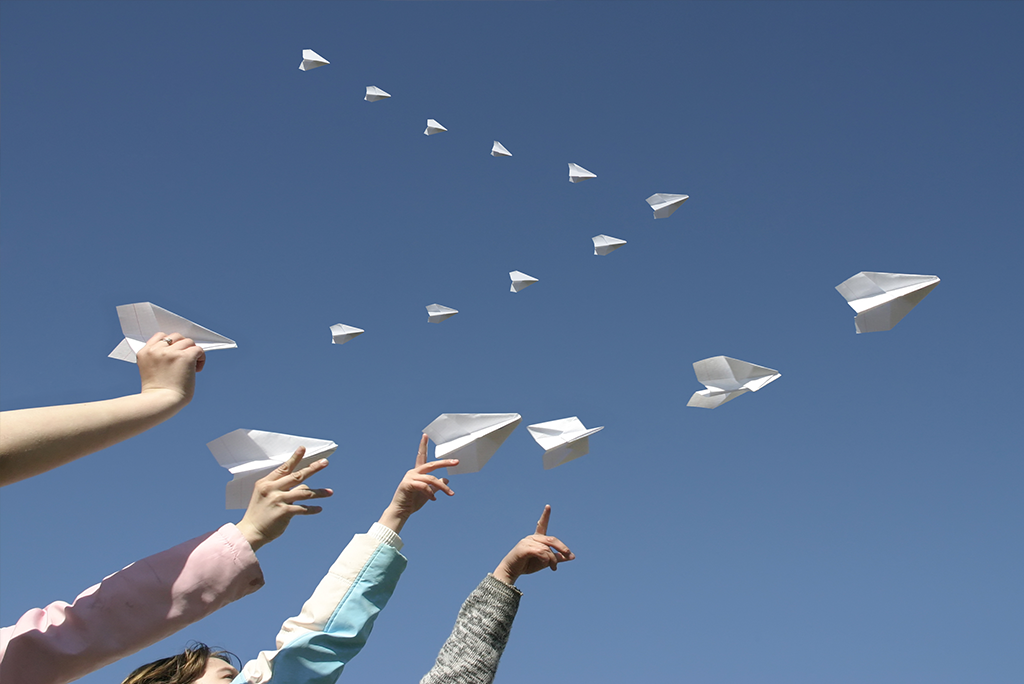Let Your Students Soar on National Paper Airplane Day (May 26)

It’s National Paper Airplane Day! Every year on May 26, people around the world come together to create and fly paper airplanes. While seemingly simple, the science of paper aeronautics can get quite complex — and those with the best designs can really see their paper planes take off. In fact, this month, on May 19, three men in South Korea designed a paper airplane that flew a whopping 252 feet, breaking the Guinness World Record.
While it’s not clear when exactly paper airplanes first took flight, there are plenty of examples throughout history of people thinking up clever ways to make paper fly. For example, the Italian Renaissance artist and inventor Leonardo Da Vinci designed a “flying machine” from parchment, though the Chinese may have invented the first papyrus airplanes thousands of years earlier. These, however, were likely similar to kites.
The first “true” modern paper airplane was designed in the 1930s, when Lockheed aircraft corporation co-founder Jack Northrop used paper designs to create test models of real airplanes.
How To Create Your Own Paper Airplanes
Interested in creating a paper airplane? A single sheet of paper can be folded in many different ways to create an endless array of airplane designs. How you choose your design will depend on what kind of airplane you want to build. NASA provides designs for paper airplanes, including a special economical design, the Ring Wing Glider (instructional videos included). Let your students test different designs to explore the characteristics of each.
For a more detailed lesson on the mechanics of flight, check out the Take Flight! lesson plan from IEEE TryEngineering. Show your students how flight is possible and how engineers have improved glider designs and materials to improve flight accuracy and distance. Students build and test their own gliders out of simple materials.
























